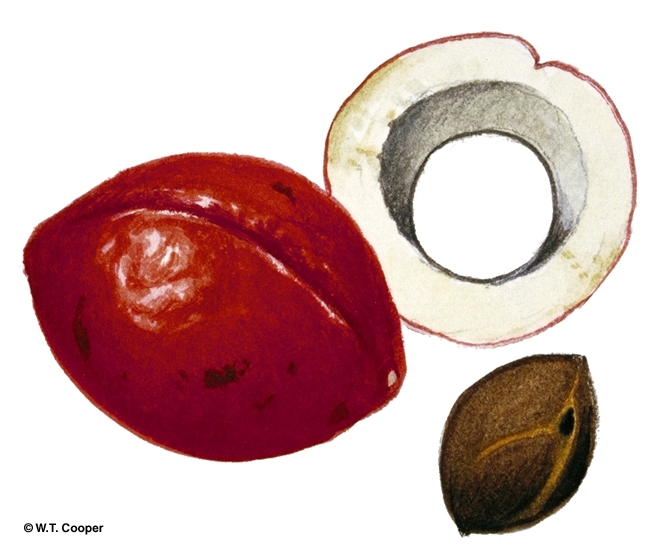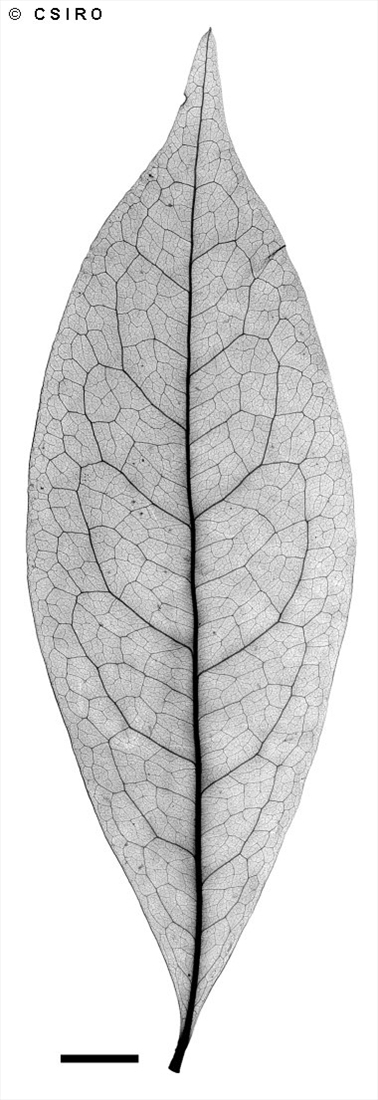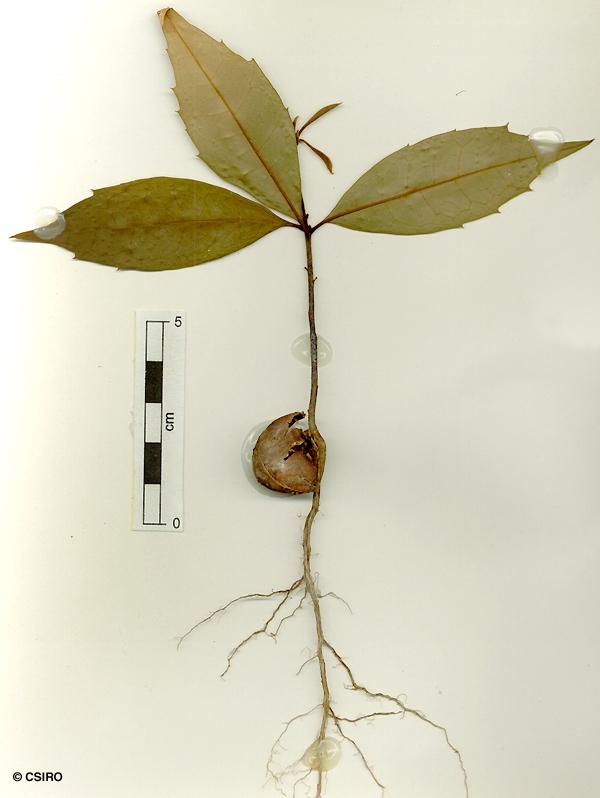Australian Tropical Rainforest Plants - Online edition
Triunia erythrocarpa Foreman






Foreman, D.B. (1987) Muelleria 6: 302. Type: State Forests Reserve 310, Swipers Logging Area, 8.x.1973, B. Hyland 6919 (flowering collection). (Holotype: QRS. Isotypes: BRI, NSW, QRS).
Spice Bush
A small tree seldom exceeding 30 cm dbh. Fine oak grain in the wood and a similar pattern in the inner blaze.
Inflorescence about 7.5 cm long. Flowers paired, pedicels ferruginous hairy, 4-7 mm long, without a common peduncle. Tepals sparsely ferruginous hairy, about 12-20 mm long, anterior tepal free, the other three tepals cohering for part of their length in the basal section. Anthers about 2.5 mm long, rostrate at the apex, filaments about 1 mm long. Hypogynous glands two, free, about 0.5 mm long. Ovary sessile, densely ferruginous-tomentose, about 1.5-2 mm long. Ovules 2. Styles about 22-25 mm long.
First pair of leaves elliptic with about 1-6 prominent teeth along the margin on the upper half of the leaf blade. At the tenth leaf stage: leaf blade obovate, glabrous, apex acuminate, base attenuate, margin often serrate, teeth none or about 1-6 on the upper half of the margin; lateral veins form loops inside the blade margin. Petiole and stem with a few to numerous reddish brown hairs. Seed germination time 49 to 217 days.
Endemic to NEQ. Altitudinal range from 450-1200 m. Grows as an understory tree in well developed upland and mountain rain forest.
This species produces attractive bright red (scarlet) fruits. The seeds have a pleasant flavor but they should be completely avoided. One collector, who ate a part of one seed, ended up in hospital with a heart rate well below the normal rate. A bulk sample of this same fruit collection was sent to the Queensland Government Botanist of the time with a warning about the consequences of eating the seeds. Despite this, and despite his experience with poisonous plants, he tasted a seed and ended up with a much reduced heart rate exactly like the original victim. Everist in Litt. documented his experience and informed the author that he alleviated his symptoms by drinking a strong cup of tea heavily laced with sugar.
Seeds and flesh eaten by Musky Rat-kangaroos. Cooper & Cooper (1994).
A very attractive shrub or small tree which produces very fragrant, showy, terminal heads of flowers. Does well as a potted plant.





